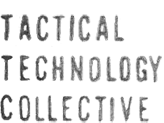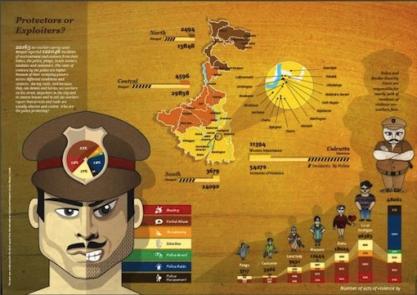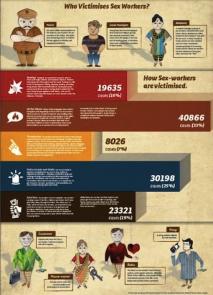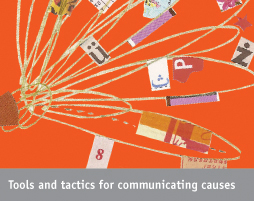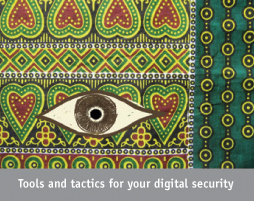Sex Worker Voices
Tactical Tech has been working with two sex-worker collectives in India and Cambodia to explore how community-based organisations can use data and evidence in their advocacy. This two-and-a-half year project was a collaboration between Durbar Mahila Samanwaya Committee (DMSC) in Calcutta, India, and the Women's Network for Unity (WNU) in Phnom Penh, Cambodia.
This write-up is the first in a series documenting the project, and focuses on Tactical Tech's work with DMSC - a forum of 65,000 sex workers campaigning for the rights of sex workers.
What is evidence-based advocacy?
In order to influence people's perceptions, campaigners must make strong arguments based on fact and evidence. A challenge in communicating evidence derived from large amounts of data is to demystify it and present key pieces clearly. Visualisation is a good way to do this. It is this combination of compelling evidence presented visually to suit a target audience that we call evidence-based advocacy.
Katherine O'Reilly of Simon Fraser University in Canada explains how important it is to think about what you are trying to measure and which indicators to use in order to tell a story:
“[sex worker advocates] understand that in order to change the law, they need to change public perception. In order to do so, they need to both show how the law fails to achieve its ends, as well as the harm that it does in society. This requires the careful selection of indicators that will be easy to gather, measurable, inexpensive, easy to understand, and easy to visualize.”
Based on the data collected and the message created, information visualizations can be produced with the help of a designer. Visualisations of data grab the audience's attention while also being persuasive, informative and memorable. This process was something DMSC and WNU were keen to incorporate into their advocacy.
Both organisations work well at responding quickly to emergency situations of violence against sex workers and advocating for their rights. However, longer term, strategic, proactive advocacy with the police, policy makers and parliamentarians were areas that they felt they needed assistance with. As part of this project DMSC and WNU were encouraged to think about how to do evidence based advocacy with key audiences and how to work differently with data collection and information analysis.
What DMSC did
Stopping violence against sex workers is one of DMSC's primary goals. Before the project began, the organization had an impressive track record of collecting data on individual cases about violations, but they were not using this information in advocacy campaigns. Much of the information they compiled was not in electronic format. As an organisation they face challenges in being able to convey the nature and extent of violence against sex workers in their advocacy with key stakeholders like the police and lawmakers. Through a series of field visits and workshops run by Tactical Tech, DMSC started to think about what they really wanted to say to their audiences about the violations faced by sex workers.
DMSC conducted detailed questionnaires across 48 locations in West Bengal, collecting data from around 22,000 women sex-workers about the violence they had experienced. DMSC came up with ideas for the visual presentation of this information that they felt would be relevant to their target audiences. Supported by our design partner, Mediashala, Tactical Tech worked with DMSC to frame their data as a series of information graphics.
Why it worked
After analysing the data, DMSC became aware of the scale and nature of the violence within the sex worker communities. They found that some of the data contradicted their own beliefs. At the start DMSC believed that their work with police in Calcutta had reduced levels of violence against sex workers. However, the data showed that in fact the police in the city were responsible for the highest proportion of the violence against sex workers. The infographic titled Who Victimizes Sex Workers shows the extent and type of victimisation faced by sex workers. It clearly demonstrates that the police and babus (long term clients-turned-partners) are the main perpetrators of violence against sex workers.
The data also revealed how the stigmatisation of sex workers is reflected in the kinds of violence they face. Verbal abuse like verbal harassment, name calling, belittling, threatening to out and demean sex workers to their children, was consistently reported as a form of violence they faced. We tend to think of violence in terms of the physical, but if you consider the different abusive words for sex workers in Bengali (and most other languages), it becomes possible to consider language itself as a vehicle for violence.
The data collection process produced some welcome side-effects. It encouraged communication about the violence sex workers face, in particular those types of violence that are taboo or difficult to articulate. For example, many sex workers did not know that if a babu beats a sex worker that is violence.
DMSC said the data collection process made them feel that they better understood how to approach the community, especially by having sex workers as part of the data collection team and by conducting more regular visits, not just in the event of a crisis. One DMSC staff member commented:
“I found that after the survey on violence, there was an increase in reporting of violence cases which led to higher number of redressals…. The survey created trust and confidence in the community that DMSC could keep the information confidential and support them in cases of violence. This survey was different because it was the first survey on violence done in a systematic manner and by sex workers themselves.”
The project raised awareness among sex workers of the services offered by DMSC, and also strengthened the trust between the two parties.
More to come
As a result of the project, DMSC has changed how they collect data and how they document their work. The organisation has begun to use the information they collect as evidence in their advocacy campaign to reduce violence against sex workers. DMSC will be testing their infographics with target audiences and assessing the impact they have. In the next few months we're expecting to see visualisations of data collected by WNU. Stay tuned...
Download the information graphics here.
This Project was supported by IDRC.
